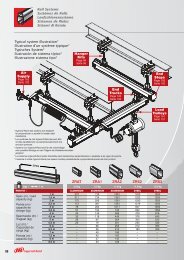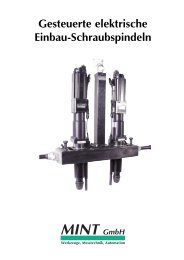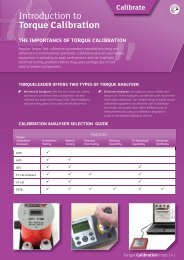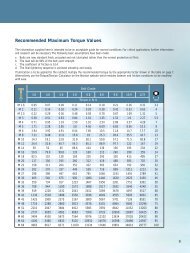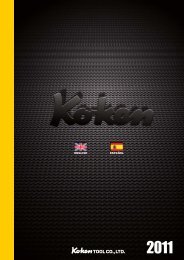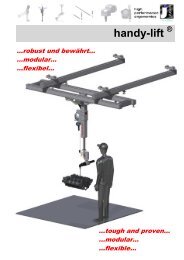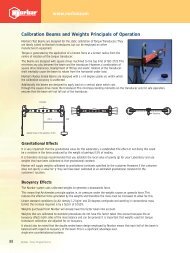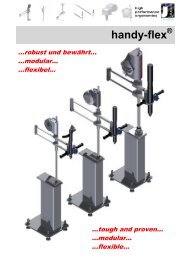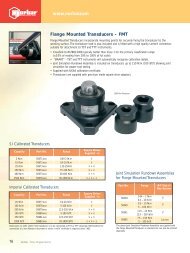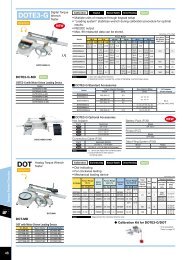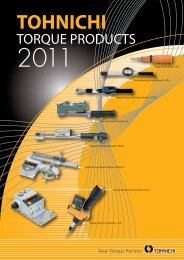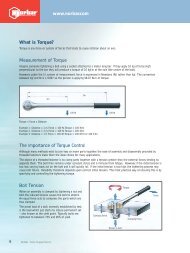NORBAR PRODUCT CATALOGUE
NORBAR PRODUCT CATALOGUE
NORBAR PRODUCT CATALOGUE
- No tags were found...
Create successful ePaper yourself
Turn your PDF publications into a flip-book with our unique Google optimized e-Paper software.
Torque MultipliersTorque ReactionAvoiding Torque Reaction ProblemsIt has already been mentioned that the reaction force is equal to the force being applied.However, the magnitude of the reaction force is dependent upon the perpendicular distancebetween the point of reaction and the centre line of the multiplier, ie. the greater thedistance the lower the force.For this reason the point of reaction should be kept as far away from the centre line of thegearbox as is practical.Customers using or modifying reaction plates for Standard Series multipliers up to acapacity of 3400 N.m should note that if the reaction is taken on the radiused part, thereaction force is perpendicular to the tangent of the curve. Consequently, the furtheraround the radius the reaction is taken, the smaller the perpendicular distance andtherefore the greater the force.Although a longer reaction plate may mean lower forces, the bending moment close to themultiplier will increase.Customers extending the length of Norbar’s standard reaction plates should be aware thatan increase in overall length will result in a larger induced bending stress and should notassume that because the reaction plate is strong enough at one length it will remain sowhen extended.Excessive side loading, resulting from poor reaction, increases frictional forces inside themultiplier.This can lead to lower multiplication ratios (outside ±4%).Signs of poor reaction are evident on thisdamaged foot. Reaction was taken at thewrong point on the foot and burringindicates that the foot was slipping off thereaction point.Green shading indicates ideal area for torque reaction toachieve multiplication factor better than ±4%Points to remember• Take the reaction as far away from the multiplier aspractical.• Ensure that the reaction point remains square to themultiplier wherever possible as this will minimise anyadditional stress in the output square, which couldresult in premature failure. If the multiplier tilts underload, the reaction may not be square.• For applications that do not allow the reaction to betaken securely it is advisable to use a doubleended or balanced reaction plate.Force = Torque / LengthLFLFReaction ForceWhen using Multipliers and Pneutorques the reaction point must be capable of withstanding reaction force.Therefore, great care mustbe exercised where reaction is taken when applying high torques to studs and bolts.By using the following formula you can calculate the force at the point of reaction.The greater the distance the lower the force.Formula to calculate Area of Stud = π x D 2 Formula to calculate Shear Force: Shear Force = Reaction Force4 Area of Stud63



